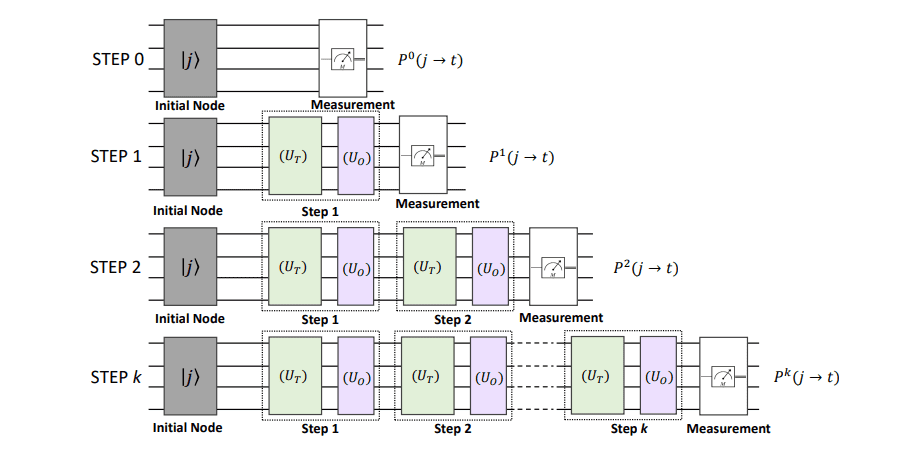Predicting connections within networks represents a fundamental challenge across diverse fields, from understanding social interactions to modelling biological systems, and current methods often struggle to effectively combine information about a node’s immediate surroundings with the broader network structure. Priyank Dubey from Texas A and M University, along with colleagues, now presents a new approach that harnesses the principles of quantum computing to address this limitation. Their work introduces QSearchNet, a framework that simulates the propagation of information across a network using quantum walks and a technique called Grover’s amplitude amplification. This allows the system to explore multiple potential connections simultaneously, prioritising those most likely to exist and demonstrating competitive performance on real-world networks, particularly when assessing challenging scenarios with complex data.
Quantum Walks Enhance Link Prediction Performance
Scientists introduced QSearchNet, a novel framework for link prediction that leverages principles from quantum computing. The team developed a system based on discrete-time quantum walk dynamics and Grover’s amplitude amplification to explore graph structures and identify potential connections. QSearchNet simulates quantum evolution, propagating amplitudes across nodes and adaptively prioritizing multi-hop dependencies to amplify structurally relevant paths. Experiments on diverse real-world networks demonstrate competitive performance in predicting links, particularly when evaluating the system with challenging negative samples.
The approach effectively integrates both local and global graph features, offering an alternative to classical methods that often struggle with complex dependencies. By aligning interference patterns and employing a phase-flip operation, the system prioritizes relevant connections and enhances prediction accuracy. While the results demonstrate promising performance, the authors acknowledge that further research is needed to explore the full potential of this quantum-inspired approach and to assess its scalability to even larger and more complex networks. Future work could focus on optimizing the system’s parameters and exploring different quantum algorithms to further improve its predictive capabilities.
Researchers engineered a system where amplitudes propagate across nodes, enabling simultaneous exploration of multiple paths and integration of both local and global features. The core of QSearchNet involves a discrete-time quantum walk, which allows for precise control over the exploration of network structures through granular tuning of transition operators. To amplify structurally relevant paths, scientists implemented Grover’s algorithm, known for its ability to accelerate searches. This combination leverages the strengths of both methods, enabling a quadratic speedup in identifying potential links.
The team formulated the problem by encoding graph structures into quantum states, enabling simultaneous exploration of multiple paths and integration of both local and global features. Experiments employed diverse, real-world networks to assess performance, particularly focusing on challenging scenarios with “hard negative” samples. Results demonstrate that QSearchNet consistently outperforms standard heuristics when evaluating performance under realistic conditions, establishing its robustness and versatility. By encoding graph topology into quantum states and leveraging the principles of superposition and interference, the research team achieved a significant advancement in link prediction, offering a promising alternative to traditional heuristic methods.

